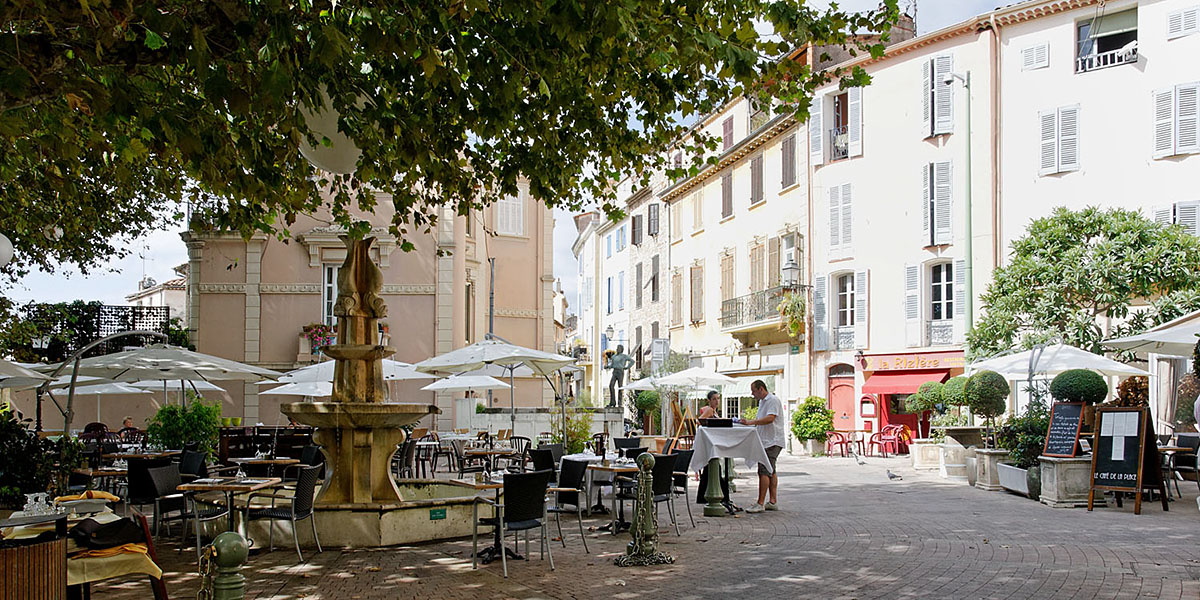
The Place Bellevue in the old part of Le Cannet
In all the time we have lived in this area (it will be 21 years this fall), we have been to Cannes more times than we can count, yet until 3 weeks ago, we had never made it to Le Cannet, a town barely two miles north of the film festival city. This was based on an entirely false assumption of ours, namely, that Le Cannet was just a residential neighborhood of Cannes, a place where people more slept at night than lived during the day, a town with no personality or culture of its own. We could not have been more wrong!
On September 3, 2011, we finally decided to pay Le Cannet a visit. The impetus came from reports of several friends who had gone to see the town's brand new Pierre Bonnard museum (it opened on June 25, 2011) and who were giving it rave reviews. What we found was a wonderful museum in a surprisingly (to us) beautiful and interesting community. There were so many sights to see that we returned one week later to the day, and even though there are parts of Le Cannet we haven't explored yet, we aim to correct our error of appreciation by showing a number of images of the place here and now.
Click on any image to see a larger (1500 x 1000 pixel) version!
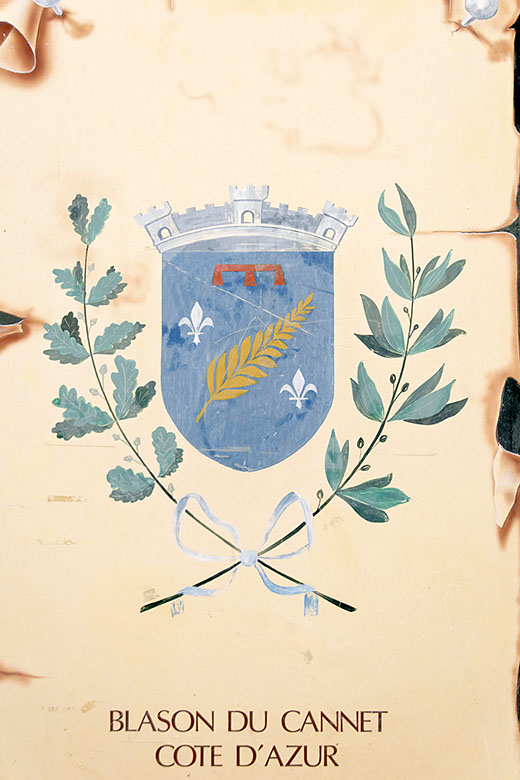
|
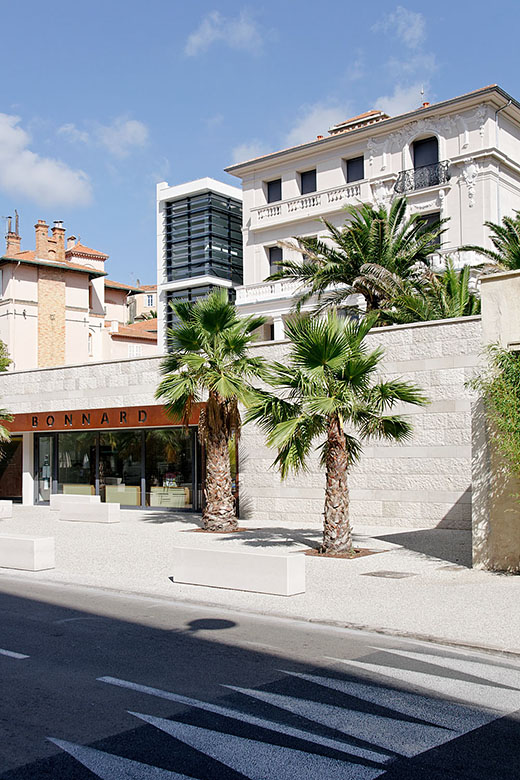
|
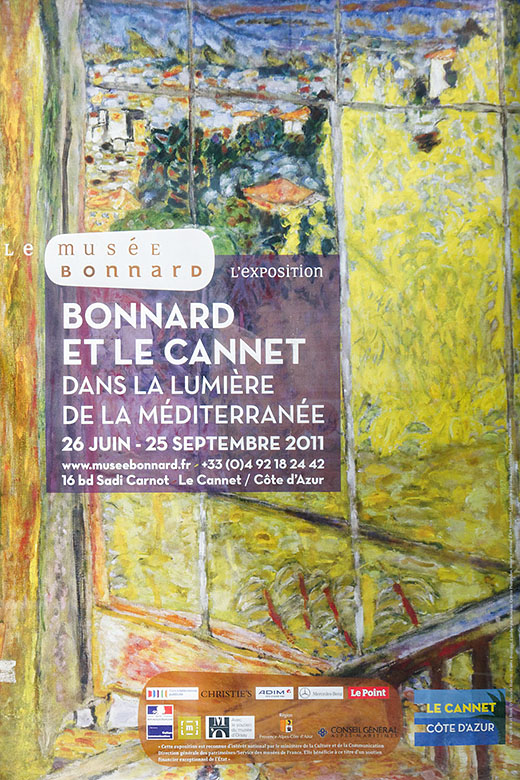
|
Le Cannet coat of arms |
Pierre Bonnard museum |
Special exhibit poster |
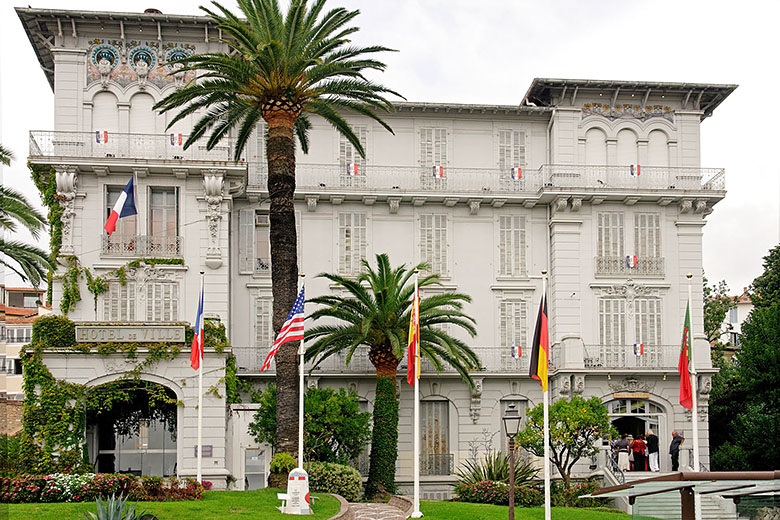
|
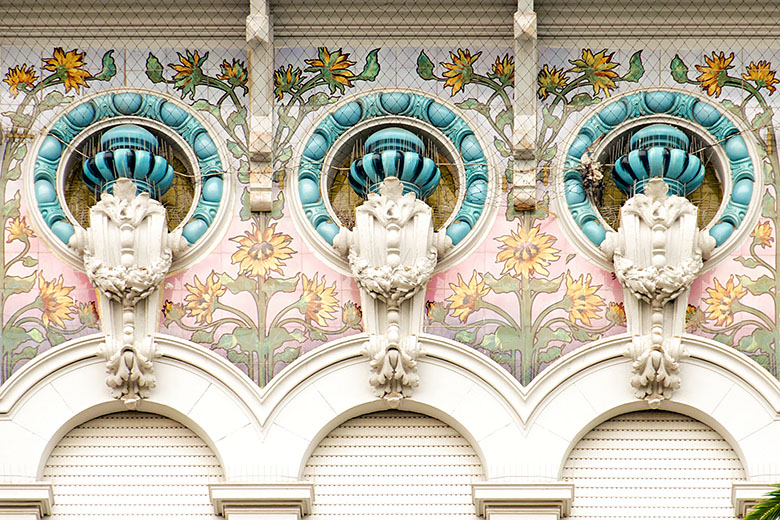
|
Le Cannet Town Hall |
Town Hall façade detail |
We began our tour on the Boulevard Carnot which comes all the way up from the center of Cannes. This is clearly the main artery of the newer part of Le Cannet. In addition to the Pierre Bonnard museum (a must for anyone who appreciates impressionism), it is where one can find Le Cannet's largest Church, Sainte Philomène, as well as various businesses, several beautiful old residences, and the imposing Mairie (Town Hall).
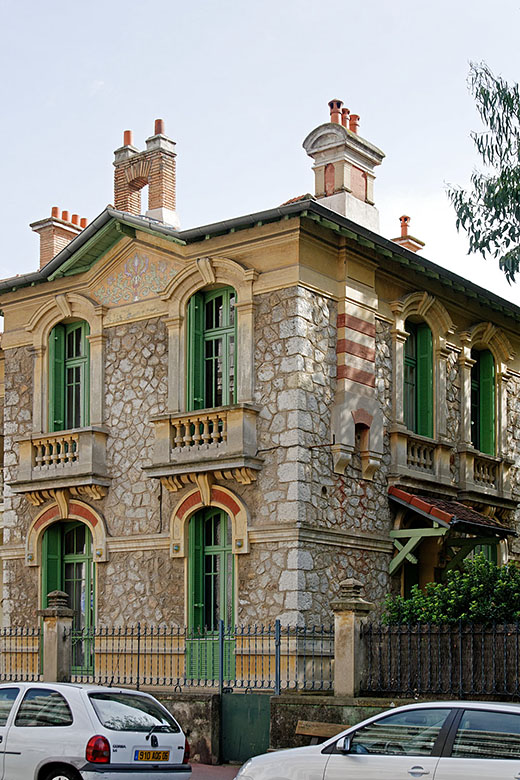
|
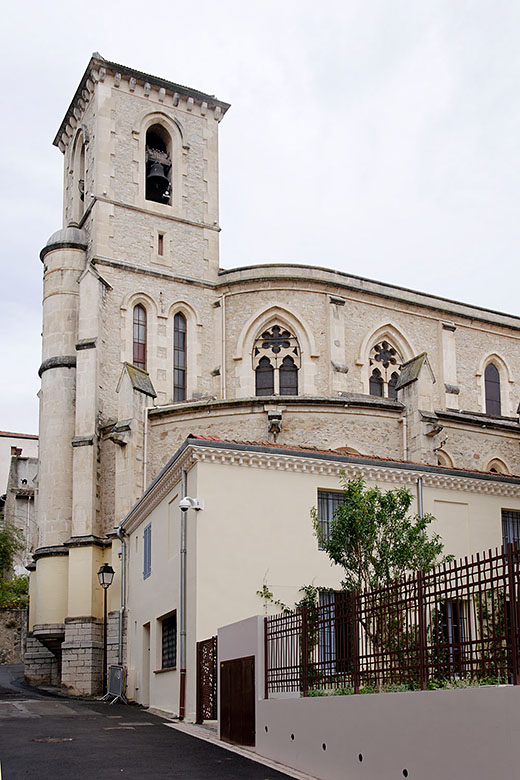
|
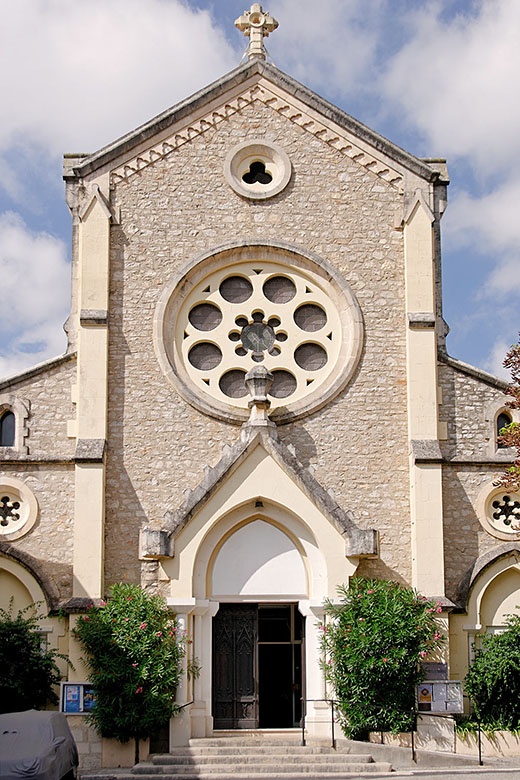
|
Boulevard Carnot residence |
Sainte Philomène church |
Main entrance |
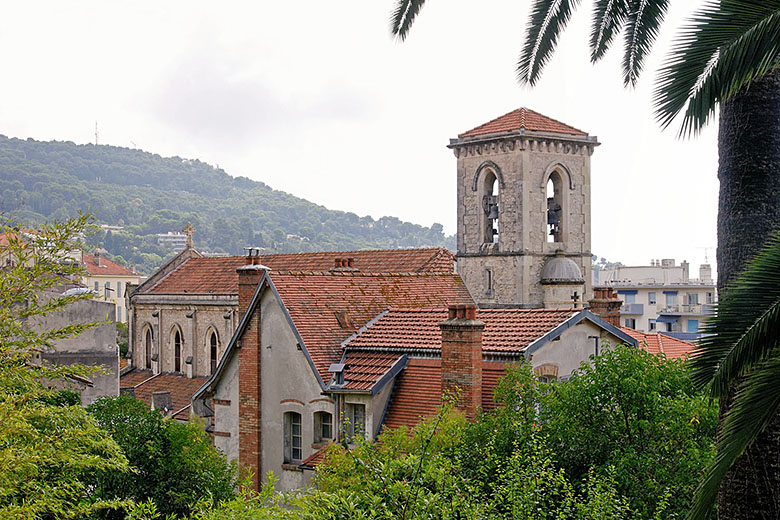
|
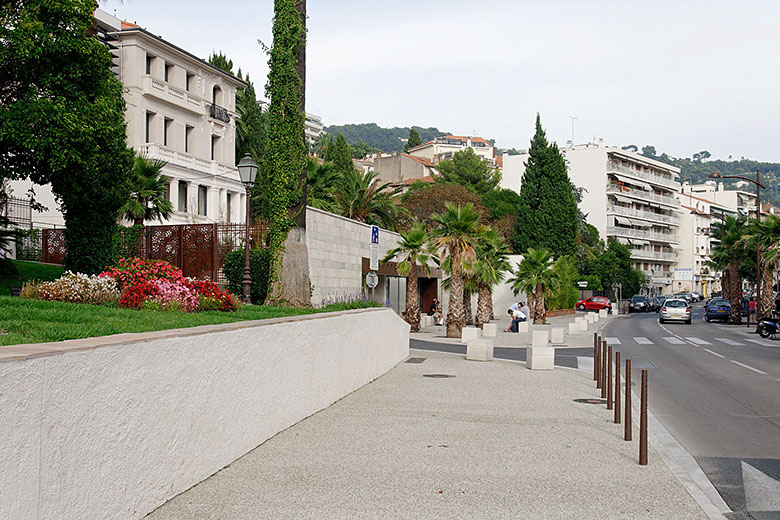
|
Sainte Philomène seen from the Place Bellevue |
Boulevard Carnot: Le Cannet's Main Street |
Through an arch on the right of Sainte Philomène's main entrance, we accessed the very narrow (and purely pedestrian) Rue des Prés and followed it up the gentle incline to an archway that led right into the Rue Saint-Sauveur, the main street of the old part of Le Cannet. It extends from the Boulevard Carnot in the east to the Route Victor Hugo in the west.
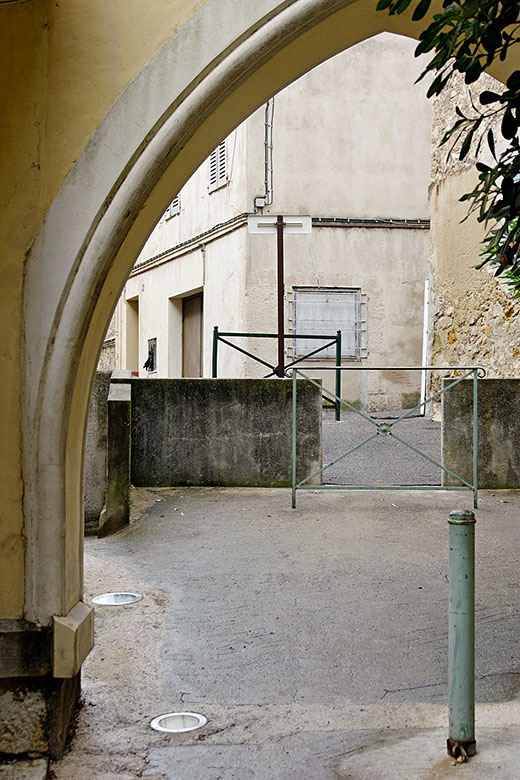
|
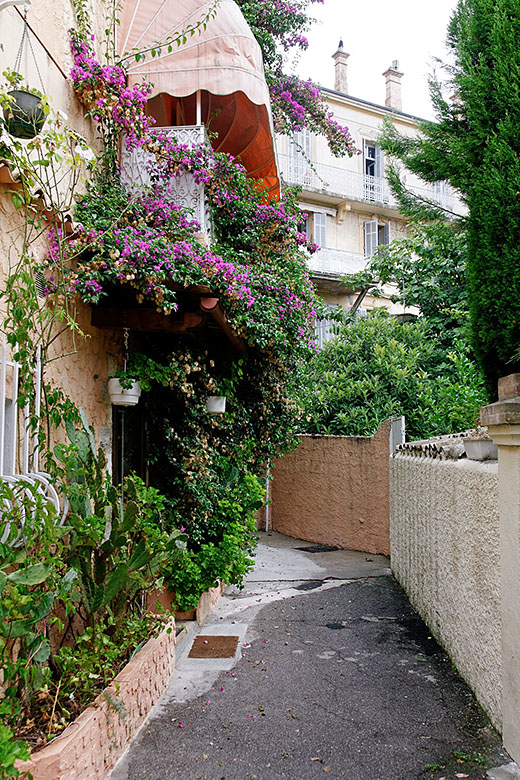
|
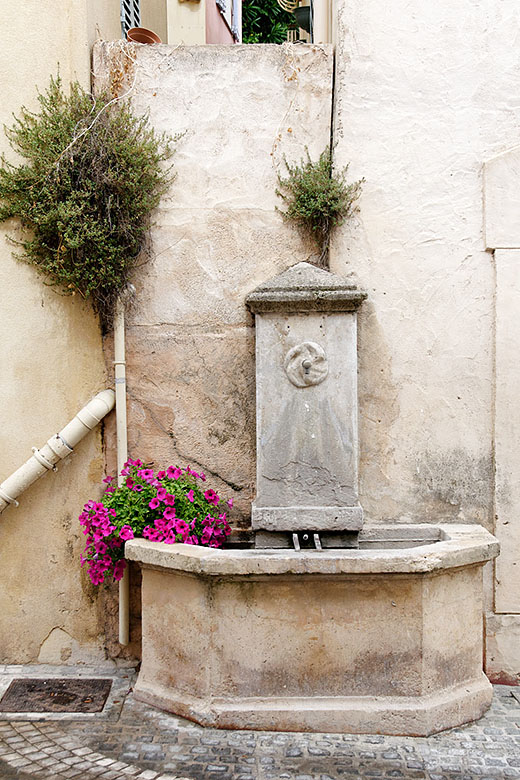
|
Archway to the Rue des Prés |
Rue des Prés |
Fountain on the Rue Saint-Sauveur |
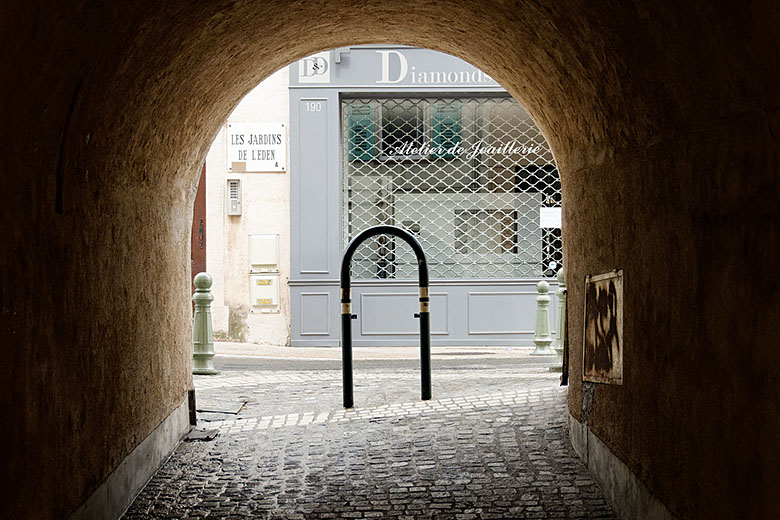
|
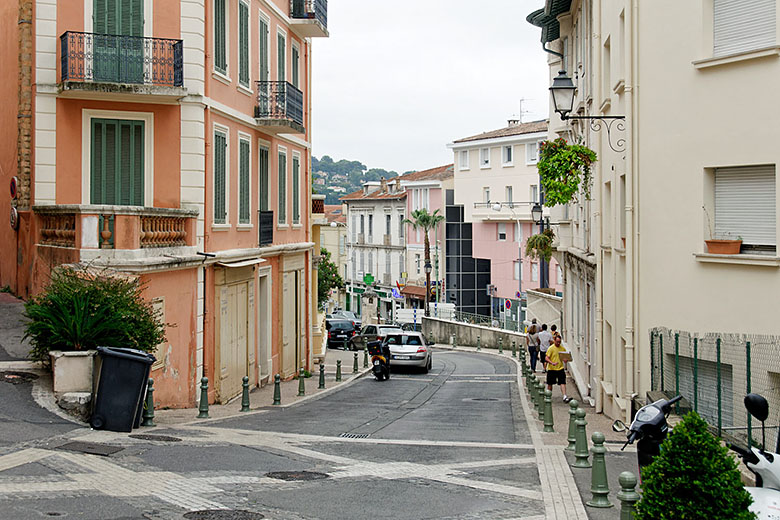
|
Archway to the Rue Saint-Sauveur |
Looking down the Rue Saint-Sauveur |
One of the first things we visited on the Rue Saint-Sauveur was the Chapelle Saint-Sauveur. No one knows exactly how old this chapel is; its bell used to warn the citizens of danger, such as fire, and it served as a call to arms in the event of approaching enemies. By the mid 1980s, the structure had deteriorated badly, and so it was beautifully restored by the town. Théo Tobiasse, an artist of Lithuanian origin who was born in the year 1927 in what is Israel today, was commissioned to decorate the chapel inside and out. A more extensive view of the result may be found on the artist's website (in French only).
A little further up the Rue Saint-Sauveur, one can admire the Mur des Amoureux de Peynet, the Lovers' Wall, a fresco by Guy Ceppa and Raymond Peynet. In the mural, the young couple is flying over a Garden of Eden inspired by (of course) the town of Le Cannet!
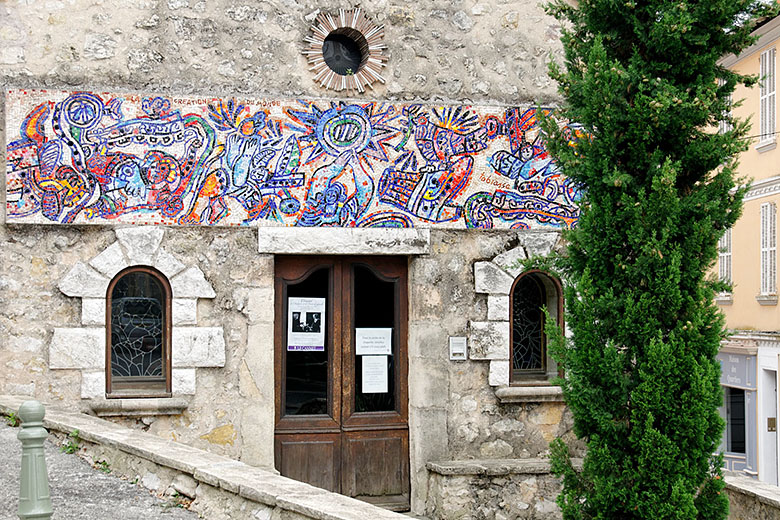
|
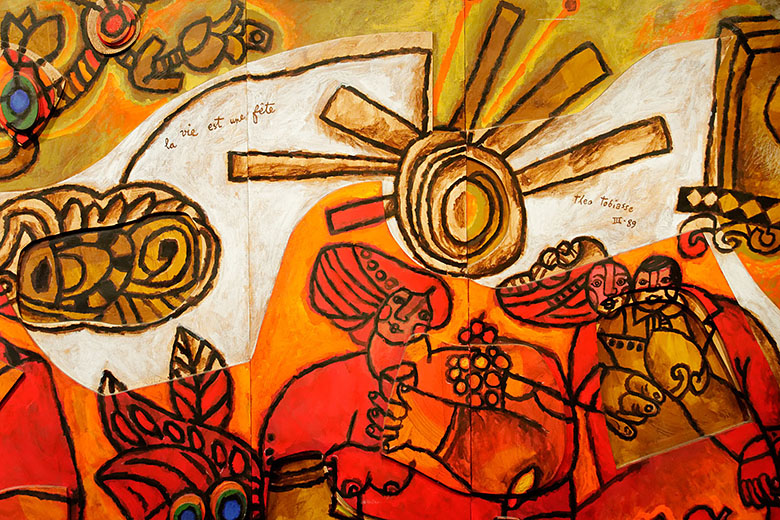
|
The Chapelle Saint-Sauveur was decorated inside and out... |
...by Israeli-Lithuanian artist Théo Tobiasse |
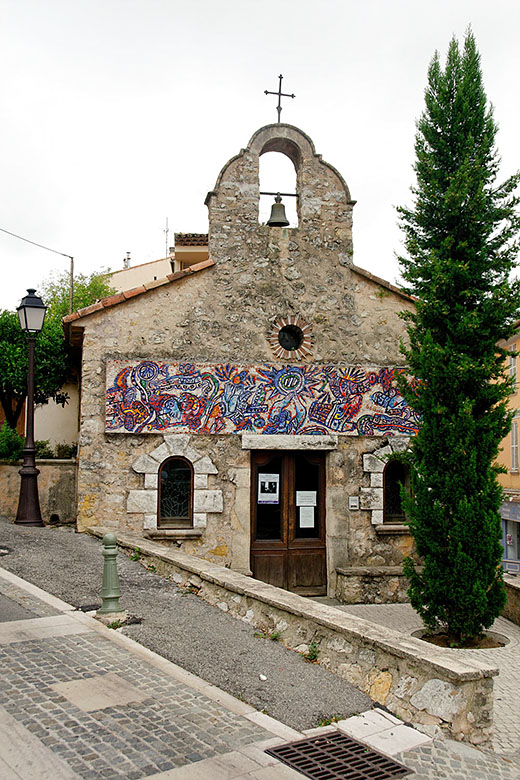
|
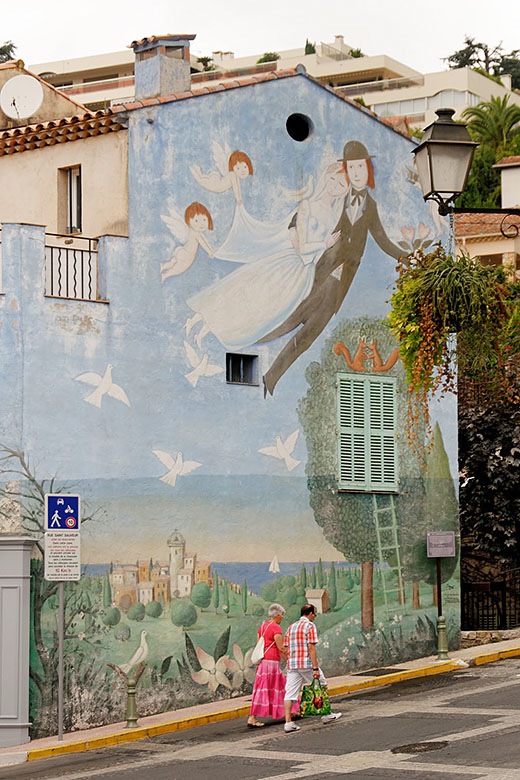
|
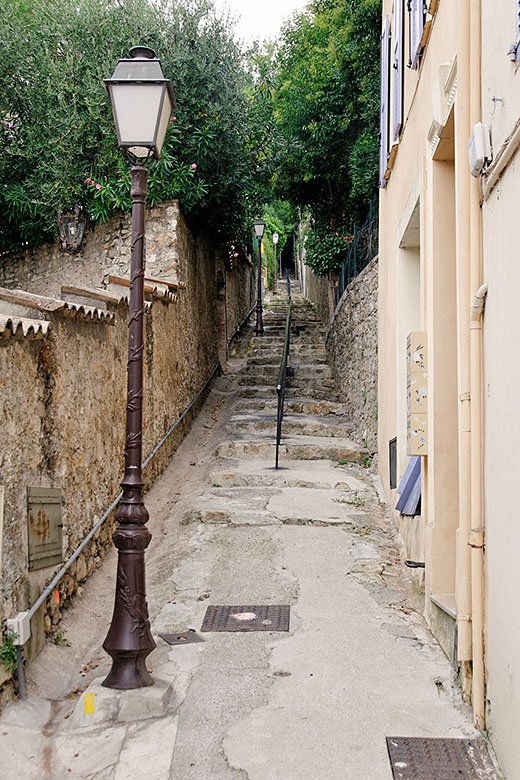
|
Chapelle Saint-Sauveur |
Peynet's Lovers' Wall |
Traverse Saint-Antoine |
Next, we came to the Place Bellevue, the center of the old town. It addition to a large number of cafés and restaurants and a terrace with a beautiful view (hence the name!), it features a bronze statue of French dramatist Victorien Sardou whose family came from Le Cannet. The statue was created by Manuel Linares in 1985. From there, we continued to walk up the Rue Saint-Sauveur, taking in (and occasionally photographing) the various sights. On more than one occasion, this involved checking out a side street.
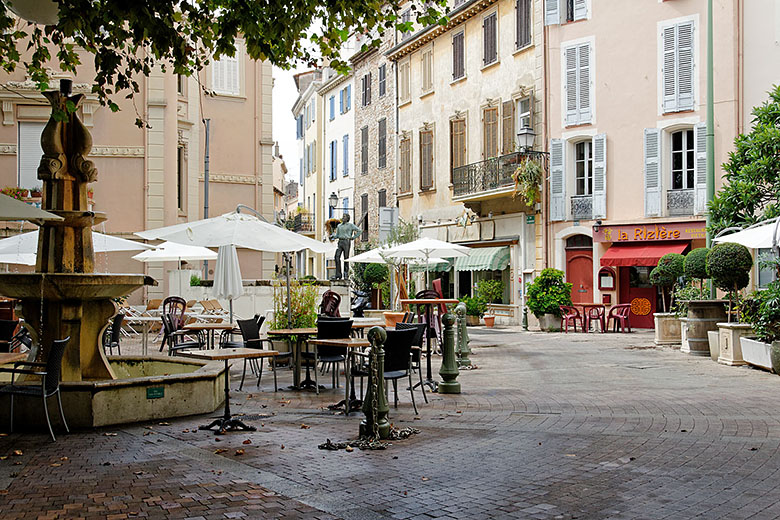
|
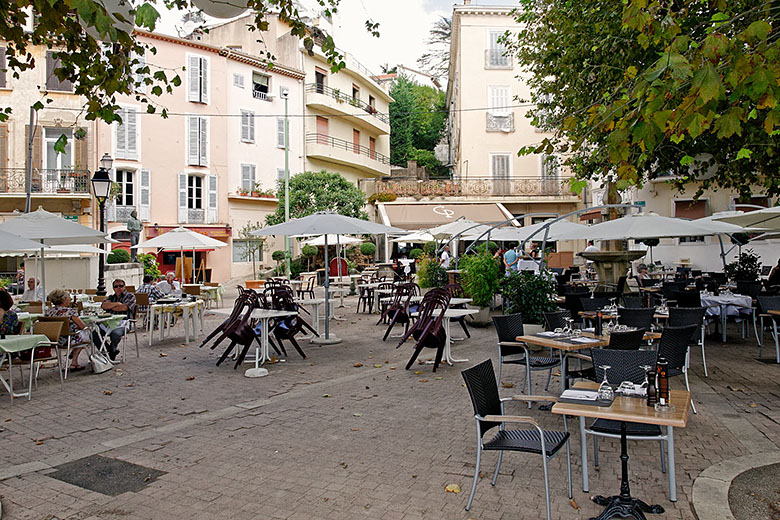
|
Place Bellevue |
Place Bellevue |
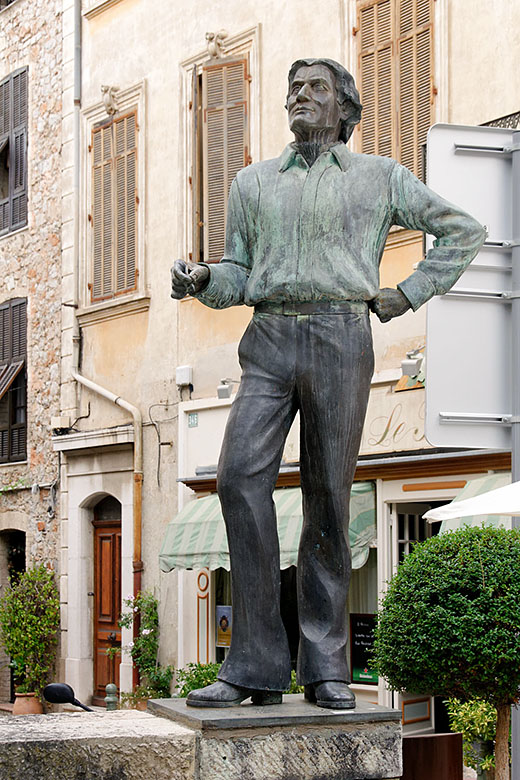
|
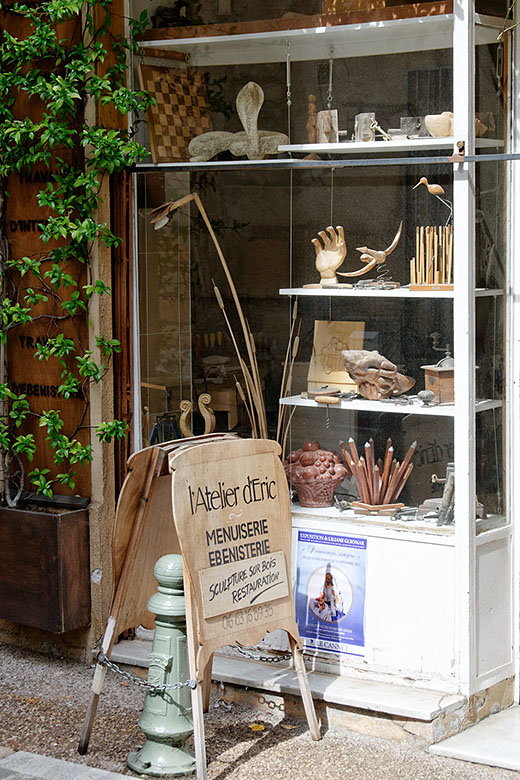
|
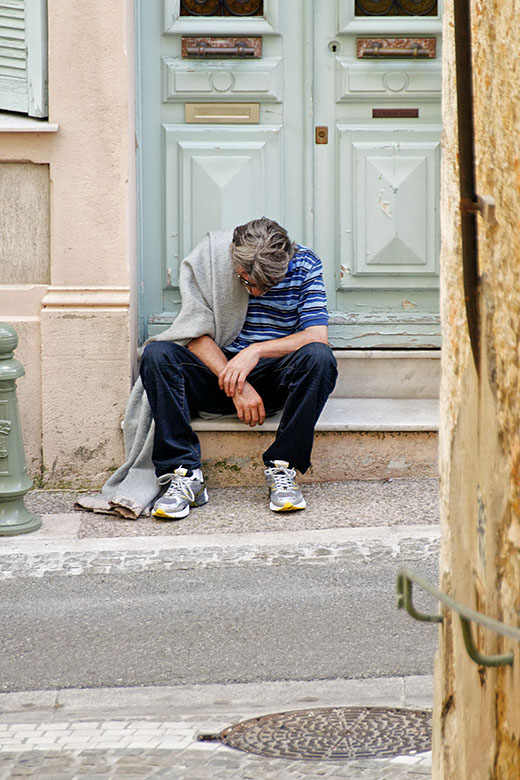
|
Statue of Victorien Sardou |
This Eric is a man of many talents! |
11:43 AM: Nap time on Saint-Sauveur |
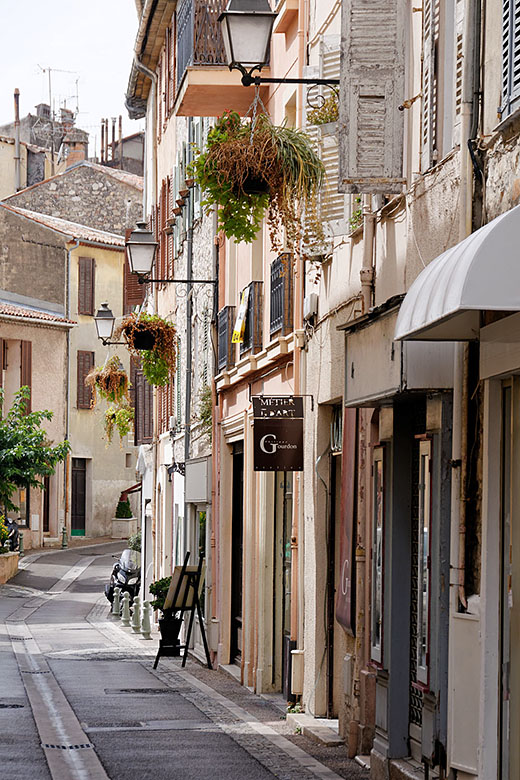
|
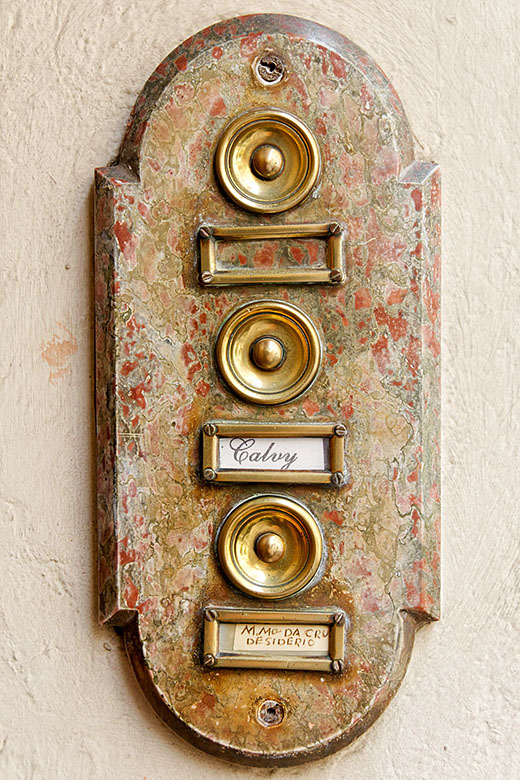
|
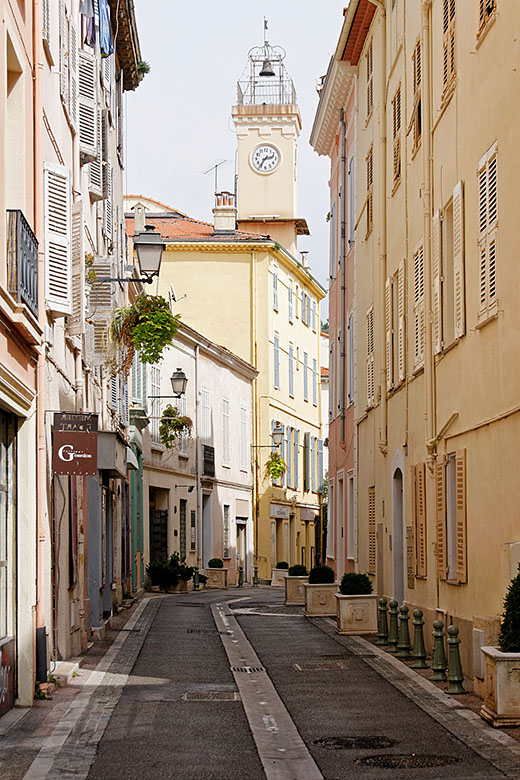
|
Looking up the Rue Saint-Sauveur |
Door bells |
Looking down the Rue Saint-Sauveur |
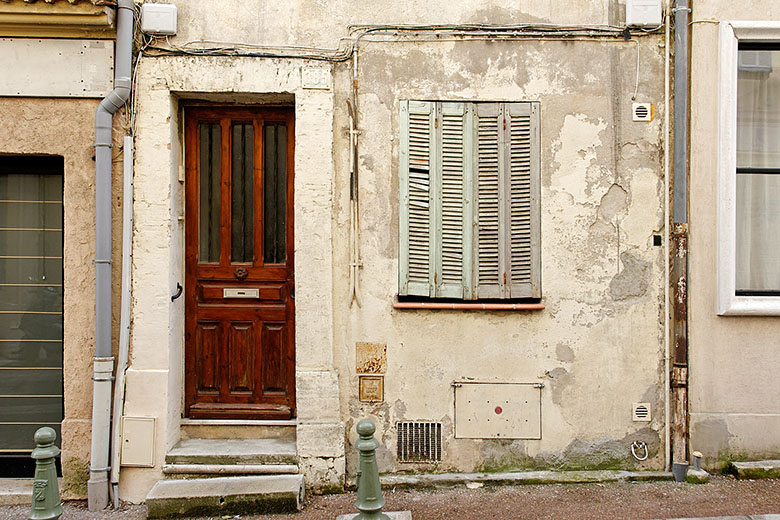
|
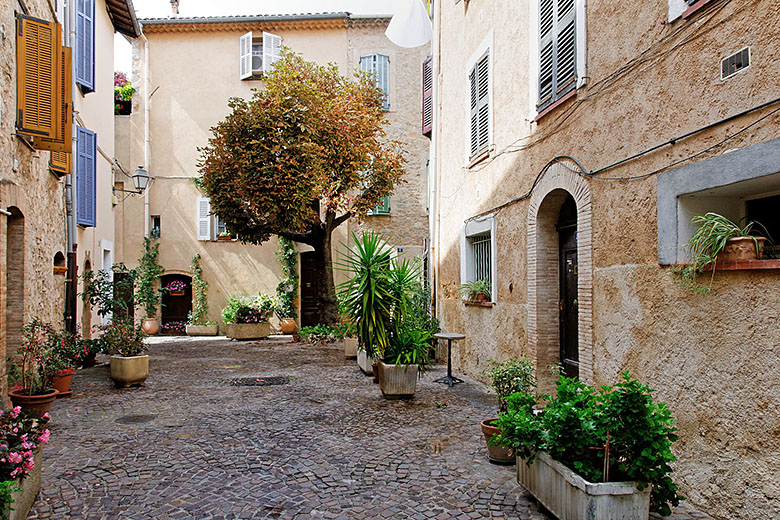
|
In the old town |
Little square off the beaten track |
At the end of the Rue Saint-Sauveur, we sought and found the Rue des Voûtes, an old, twisting road from a time where in-town real estate must have been at a premium: some of the houses are built directly over the street which consequently has a vaulted ceiling. The brochure we had obtained from the tourist office stated that above several of the doors on this street, one could see a sculpted Maltese cross, the symbol of the Knights Hospitaller, but though we tried, we couldn't find a single one until we got to the area around Sainte Catherine.
What we did find was far more recent artwork: a portrait of Pauline, some child's favorite cow. We also ran into a very relaxed resident, a cat sprawled in the middle of the road. This animal could not be bothered to get up as we walked right up to it and bent down to pet it. This elicited a faint purr but no energy-consuming activity of any kind. Only the sound of a noisy motorcycle in the next street was apparently worthy of being investigated by getting up and (slowly) walking to where the racket came from. What a life!
We left the area and made our way down the hill, across the Boulevard Carnot, and into the Tivoli garden.
25 September 2011 correction: Yesterday, we returned to Le Cannet for a third and (for the time being) final consecutive Saturday, and since we were intrigued by the mention of Crosses of Malta in the tourist information guide, we went back to the Rue des Voûtes. While there were indeed no such crosses to be seen under the vaults, it turned out that there were a few once the street emerged from under the houses. The crosses are faint, but they are undeniably there. Here is an example.
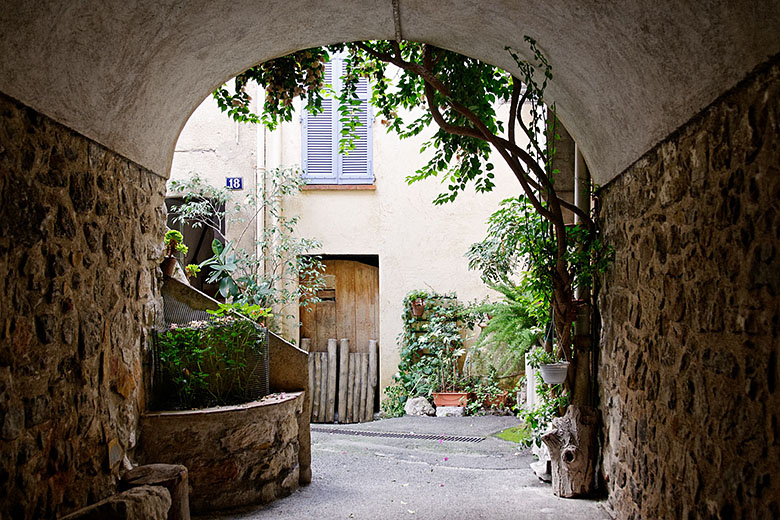
|
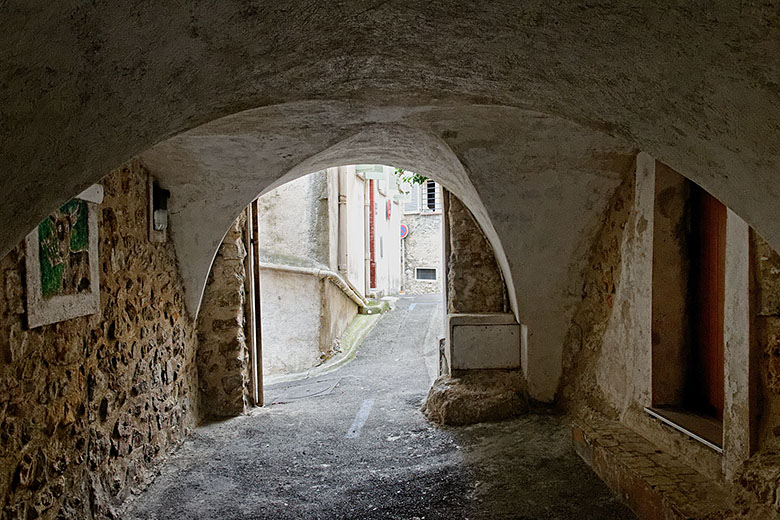
|
The Rue des Voûtes partially... |
...runs underneath old town houses |
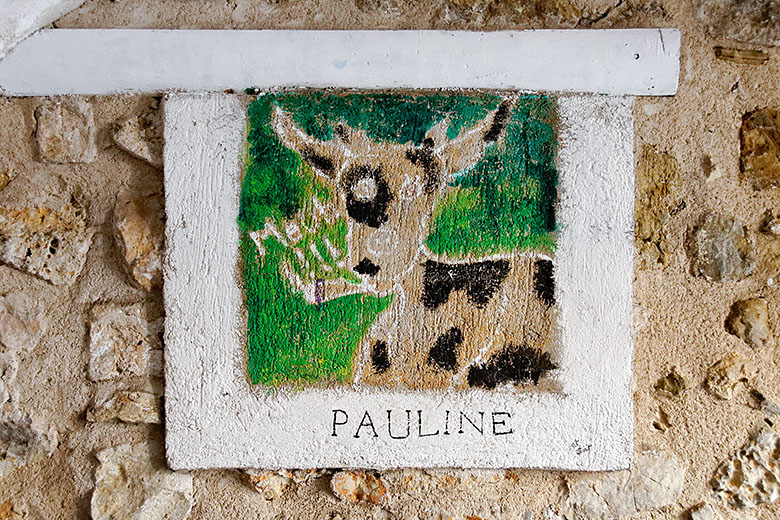
|
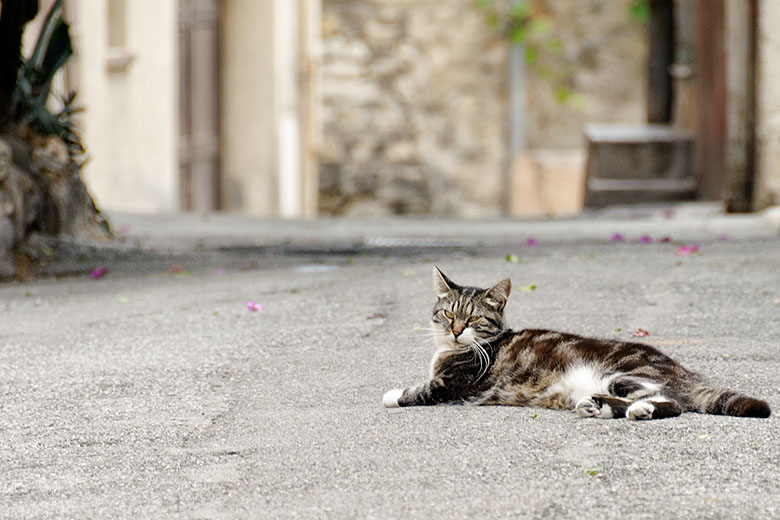
|
Children's artwork in the Rue des Voûtes |
A very relaxed Le Cannet dweller |
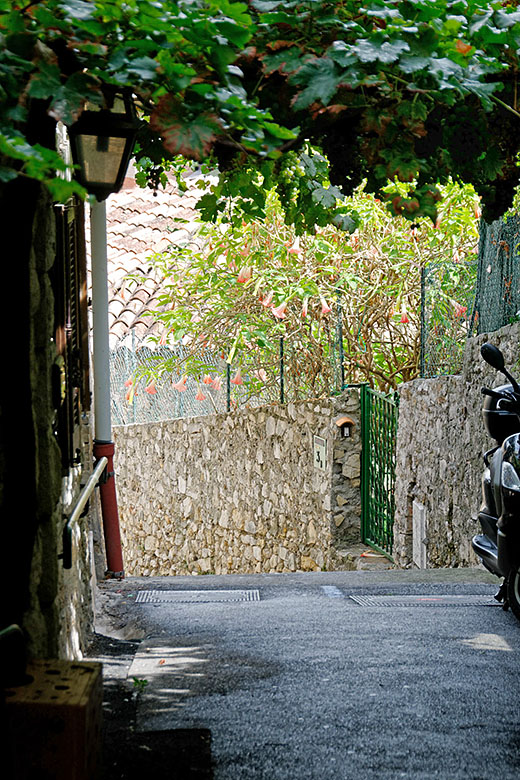
|
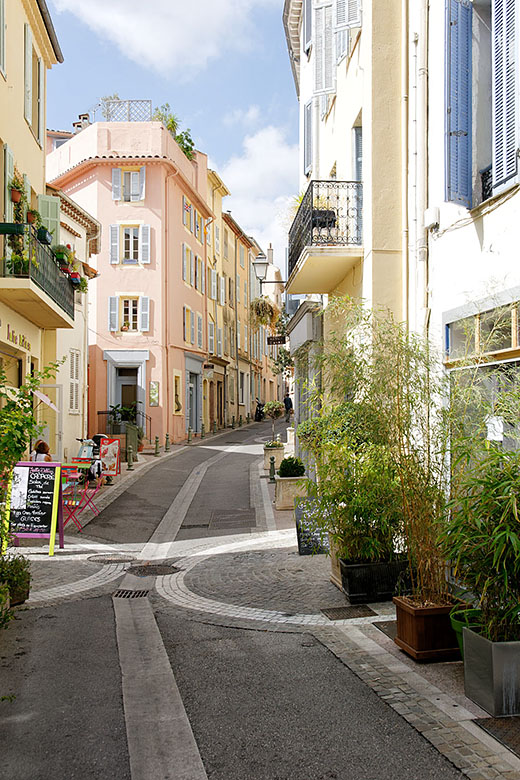
|
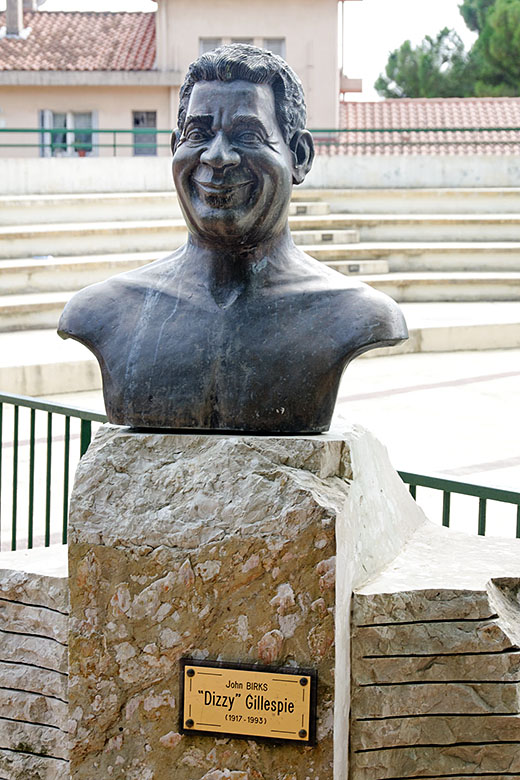
|
Rue des Paramideaux |
Yet another Rue Saint-Sauveur view |
Statue in the Tivoli garden |
Originally, the Tivoli garden used to be a field covered with olive and orange trees; indeed, the two main roads that cross the garden today are the Rue des Oliviers and the Rue des Orangers. Nowadays, the area is home to the jazz club of Le Cannet (hence the Dizzy Gillespie bust), an open-air theater, a kindergarten, a children's library, and many beautiful, old residences. There is no traffic, so it's safe for kids to play ball in the street.
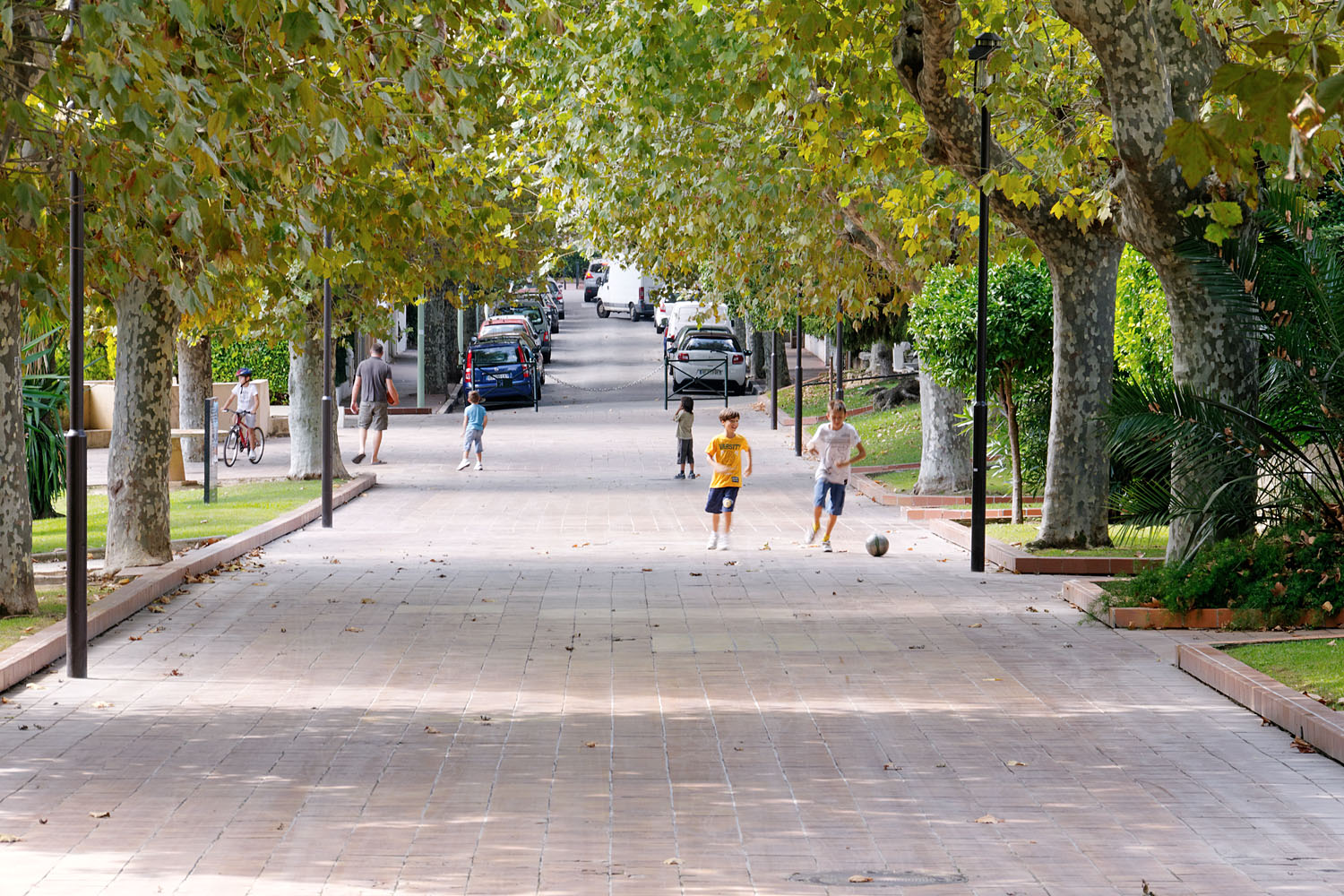
|
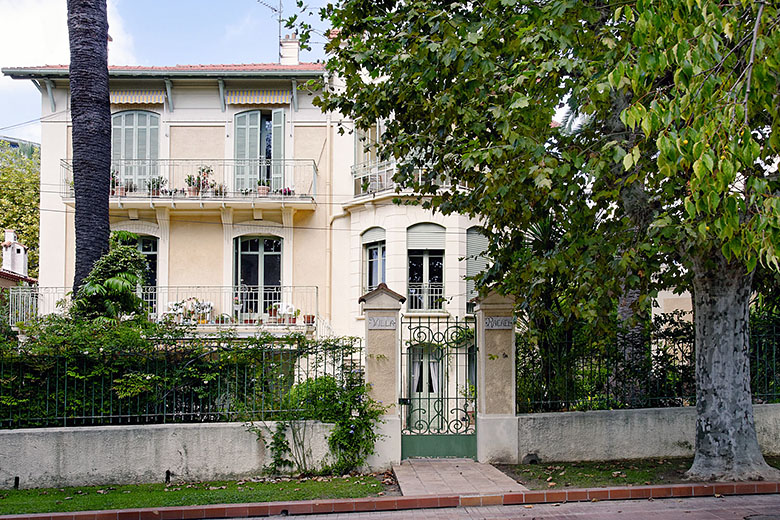
|
Boys playing soccer in the Tivoli garden |
Stately residence on the Rue des Orangers |
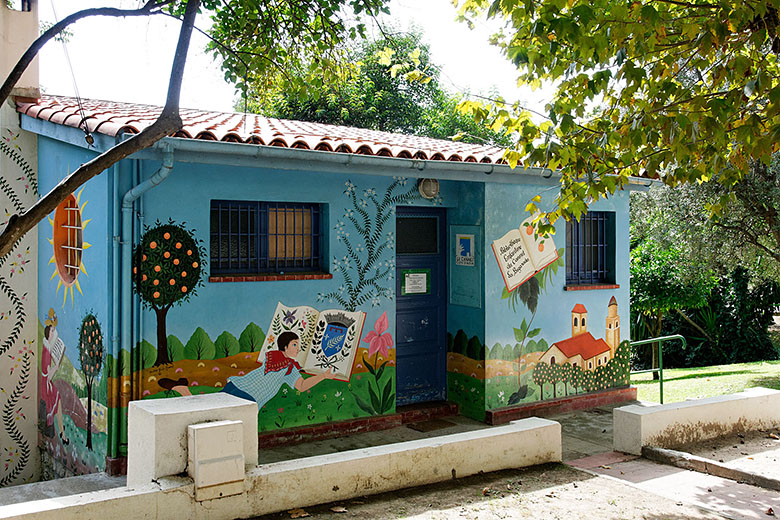
|
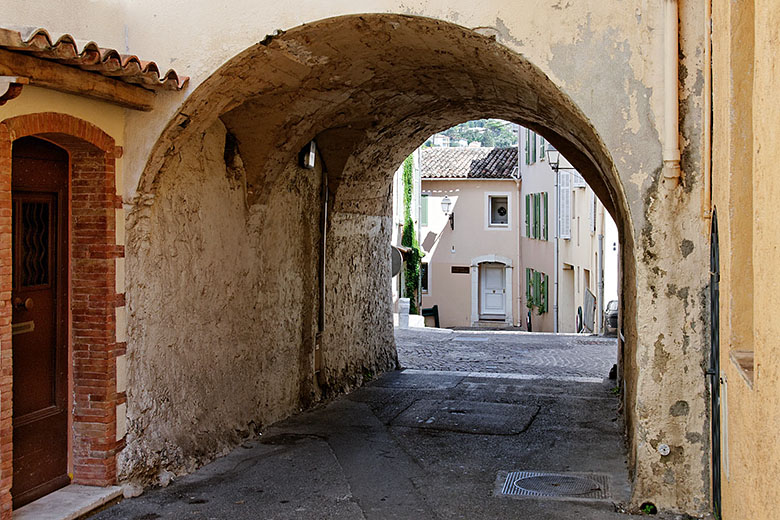
|
A library just for kids! |
On the Rue des Mûriers |
Since we did have an appointment to visit Sainte-Catherine, we had to cut our Tivoli garden stroll short. We passed "Cannet Toile", the local movie theater (those who speak French might enjoy the play on words), made our way down the Rue des Mûriers, went under yet another archway, and found ourselves in front of Sainte Catherine. The completion of this church in 1556 marked the beginning of a rift between Le Cannet and Cannes that eventually led to a separation of the two towns in 1774. Under the floor of the church, human remains were found during restoration work; these bones are now visible through thick glass plates set in the church floor. The church features much interesting artwork from various periods. I particularly liked a statue of Sainte Marthe; what looks like a green dog at her feet is actually supposed to be a Tarasque, giving the statue a truly provençal flair.
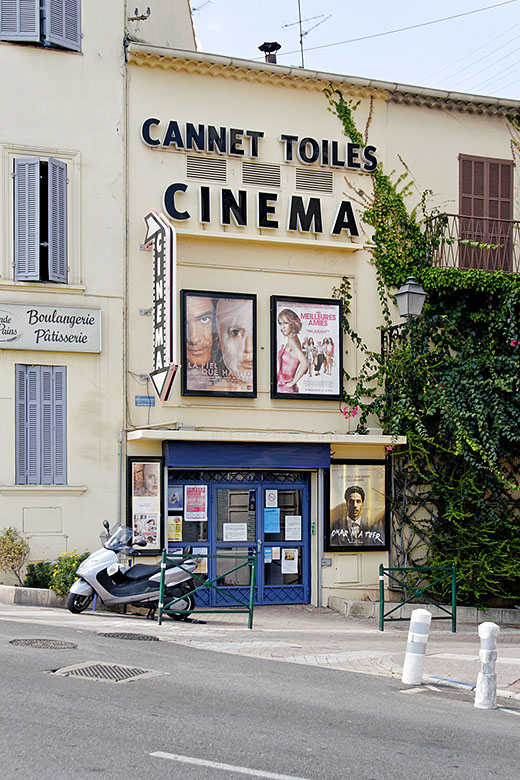
|
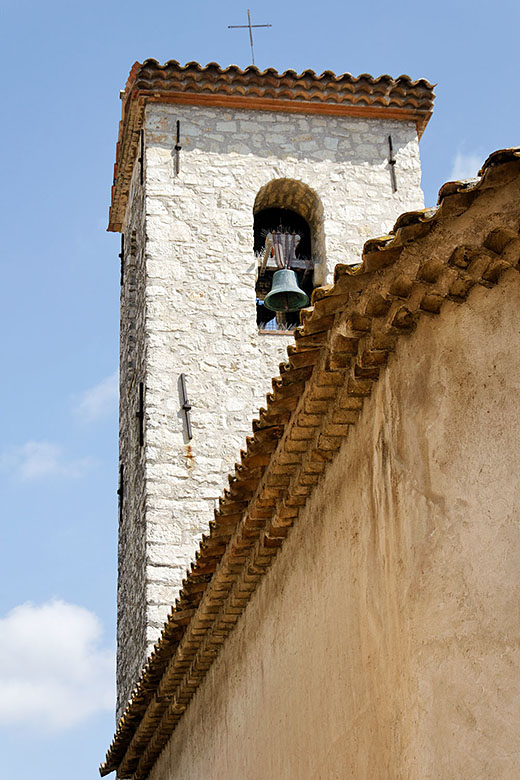
|
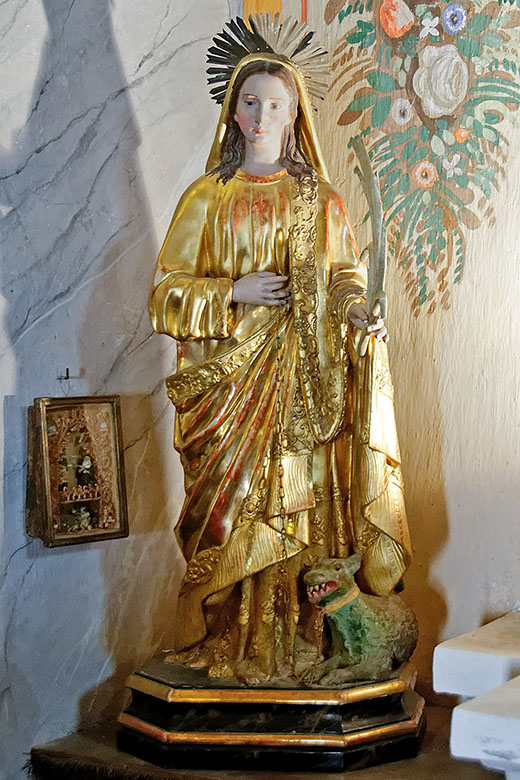
|
The movie theater of Le Cannet |
The church of Sainte Catherine |
Sainte Marthe and the Tarasque she tamed |
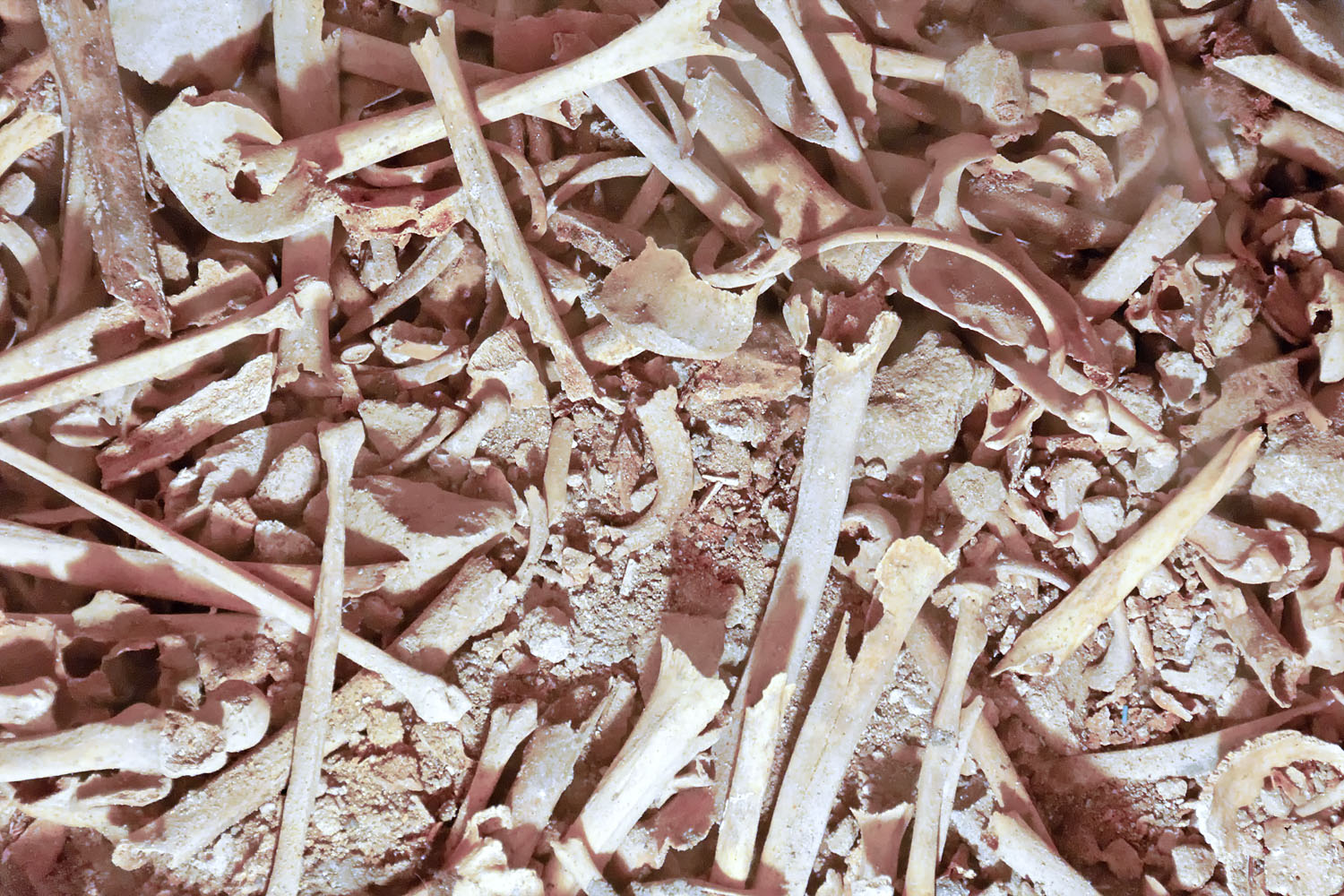
|
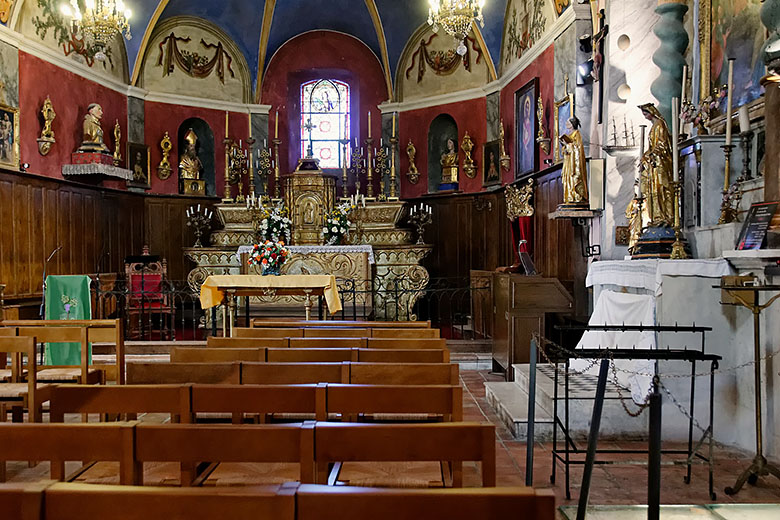
|
Human remains under the church floor |
Sainte Catherine |
There is plenty more to see in Le Cannet, and we will definitely go back one of these days. In the meantime, this page should show that for anyone who happens to be in this area, there is ample reason for a visit. The Pierre Bonnard museum alone is worth the detour, but there is much more to enjoy just by wandering through the streets of the old town. Those who would like to know more about Le Cannet may consult the Explore area on the town's official web site which provides a great deal of information in English.
Home | Site Info | Family | The Area | Trips | France | Work | Rants | Photography | Odds & Ends
This page was last modified on July 25, 2012
Send feedback about this page to feedback@kiechle.com
https://www.kiechle.com/area/cannet/index.htm
(optimized for Retina display)
All contents © 1999-2026 The Kiechles